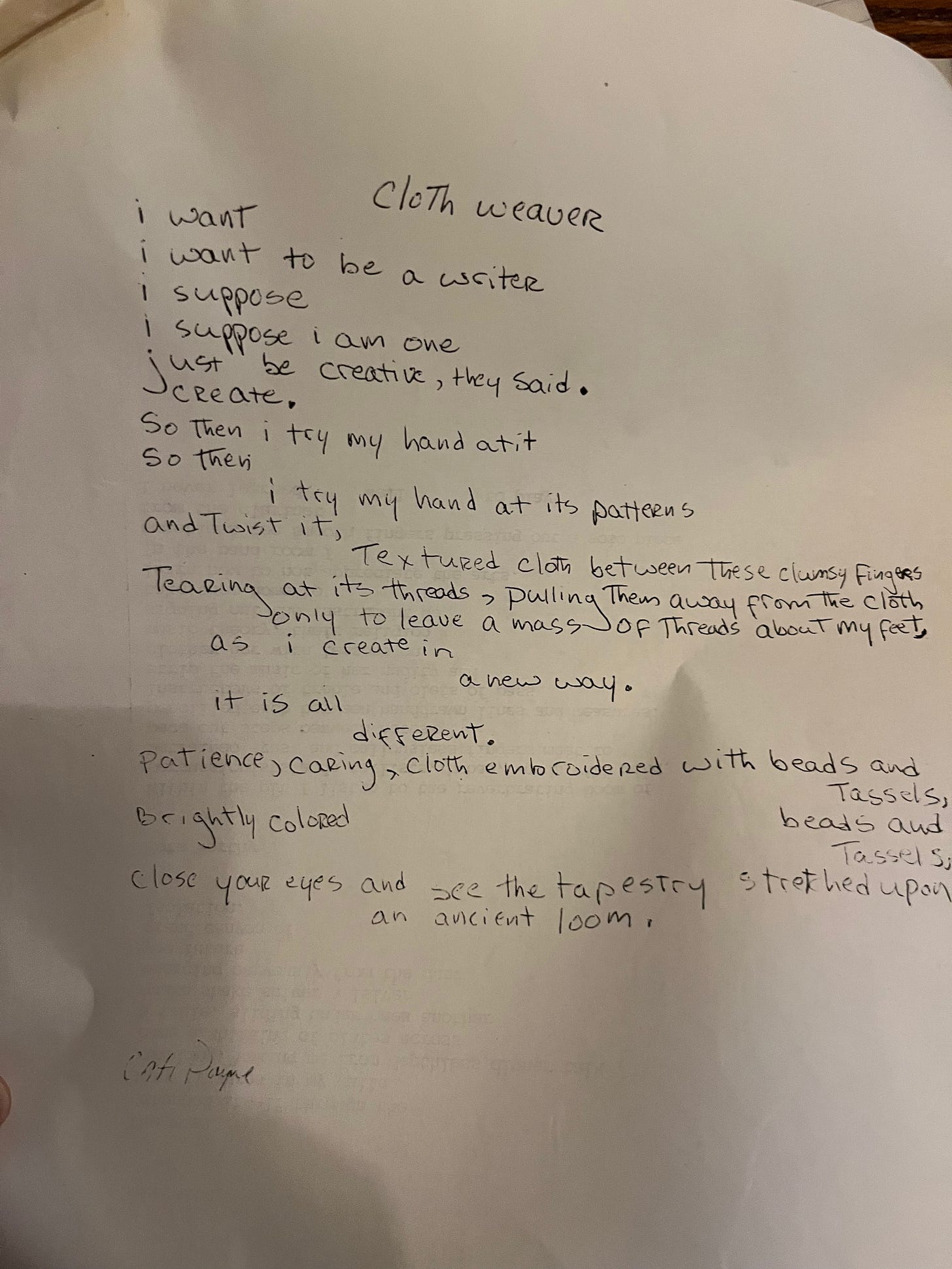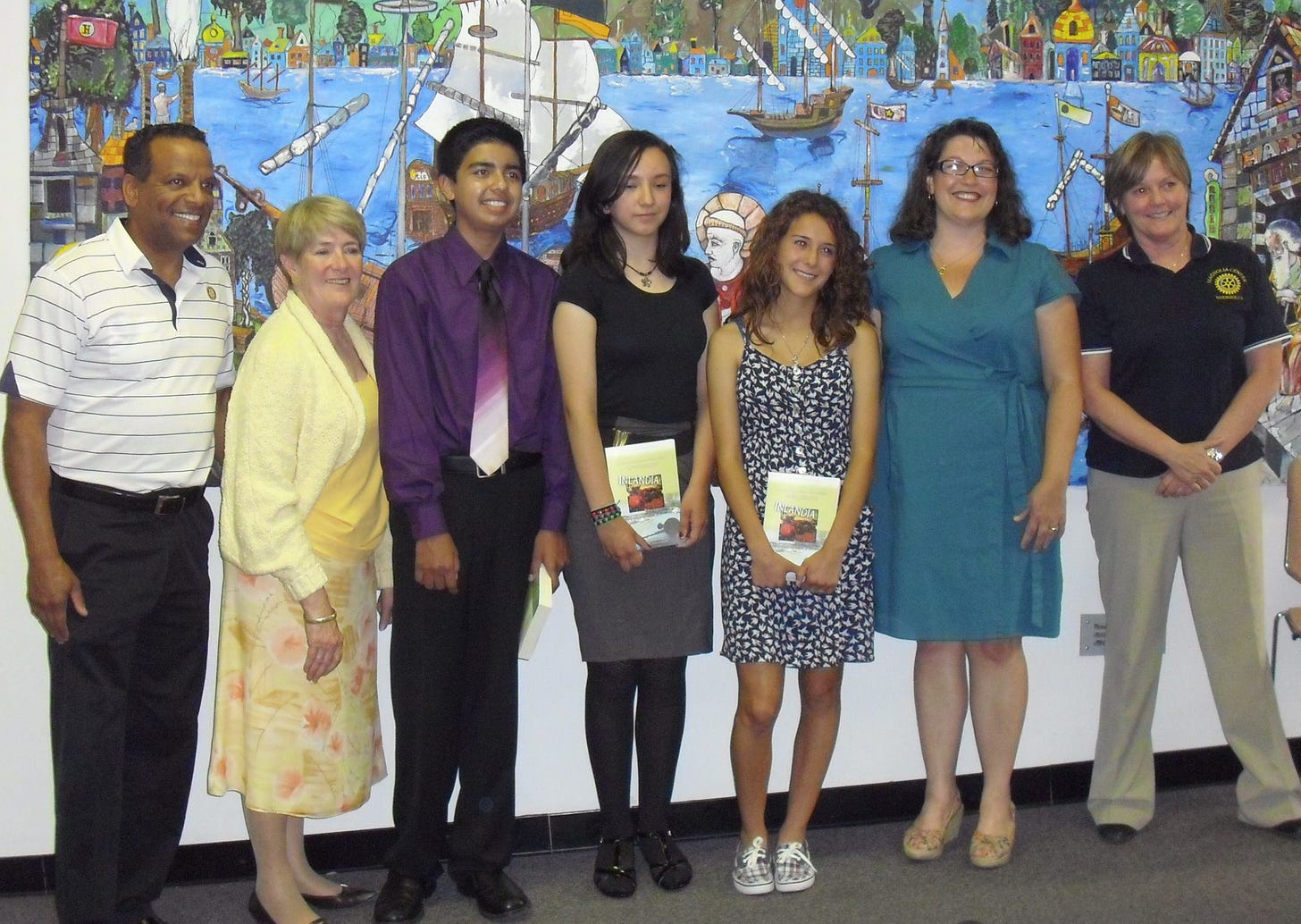This week I’ll be talking at the library about what it means to build your own “writer’s life” and how I built my own. It is something that was built with intentionality, over time, and in stages. As in everything, there is always a beginning, a middle, and an arrival.
While there is no exact recipe that I can give you, I can show you how I did it.

Beginnings can start anywhere
From a young age, I learned how to entertain myself, which enabled my imagination to flourish. I had specific teachers who were supportive, who were my allies. I had opportunities and occurrences that were outside of my control but which forever altered the course of my life: California Poets in the Schools visited my eighth grade classroom, which taught me about writing prompts and chapbooks and encouraged exploration. Mrs. Swieck, my ninth grade English teacher, loaned me books from her own personal library. That meant a lot to me, that she trusted me with her books. Another teacher whose name that I’m saddened I no longer remember but who taught a semester-long creative writing class wrote on one of my stories, “So you want to be a writer?” I’d never considered it, but now that the idea was planted, why yes. Yes, I did.
The middle (which is probably where you already are)
I followed my interests where they led me, which took me to the one creative writing class at my community college (which I took repeatedly for credit until I could no more, then kept attending anyway, credit be damned) and the school literary journal; theater class and drama club; art class. I couldn’t afford the art supplies, so I dropped it. I stuck with drama club long enough to act in a series of one-act plays, to go on a group trip to another city to perform. I surrounded myself with people who took pleasure from making things, and I made things too. I made space in my life for creative pursuits. I sought out open mics, local literary journals, and friends who were also creative. I made choices and I took chances that allowed me to become who I am.
For instance, I regretted not having gone to a four year university, so I spent a lot of time wandering the Claremont colleges, blending in, daydreaming about returning to school. One day I picked up a magazine on campus and spotted a flyer that they were looking for writers. I showed up to the information session and said that I’d be applying there soon and could I write for the magazine. They said yes. Thus began my short stint writing for Pitzer College’s The Other Side Magazine.
Another chance I took was making friends with a “famous” local writer, Gayle Brandeis, who believed me when I said I was a poet and even invited me to join a writing group she was forming with a friend: Judy Kronenfeld. That was 23 years ago. Gayle is now one of my closest writer confidantes and while she has since moved out of state, we keep in touch and Judy and I and the others still meet to this day.
After I had children, I had enough confidence in my abilities to write more regularly, and in fact felt compelled to do so by the complexities of motherhood. I began sending my work out regularly and getting published. I even pitched magazine articles and published straight prose, paying my sister to babysit.
And while I didn’t get a Bachelor’s degree, I sought out my own education, taking as many workshop as I could reasonably take and then some. I joined the Women’s Poetry Listserv, which gave me a wider literary community to connect with—not just local writers, but national, many of them highly acclaimed, and it was a window into what a “real” writer’s life looked like, and I wanted that. I began a correspondence with another poet who I paid for line by line critique. We were both mothers with our first children at home so we had that in common. And my work slowly improved, became more interesting, and better crafted.
Arriving at my life
Pretty soon, which is to say, about a decade after I’d started writing seriously, I was writing well enough to be accepted in poetry circles and journals and anthologies. My first chapbook was accepted for publication, then a full-length book, and then—after long consideration—I went back to school for my MFA, having been granted a BA waiver due to my own ongoing self-education and previous community college credits.
At that’s when I began giving back. I led workshops for teens, trying to be that person that others were for me. I organized poetry readings for others. Volunteered for Inlandia. That was fourteen years and many books, anthologies, and literary journals ago. I take every opportunity to give talks, classroom visits, podcasts, readings.
So there you have it. How can you build a writer’s a life of your own?
My advice for you
Take chances.
Look for opportunities.
Make space in your life for doing what you love.
Find your your co-conspirators and allies.
Unplug.
Use your imagination.
Don’t let others define who you are.
Define for yourself what success looks like.
Know that if you write, you are a writer. You do not need anyone’s permission or blessing to say that.
Never stop learning.




